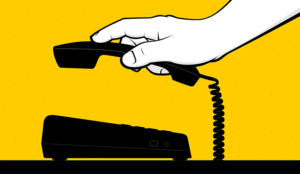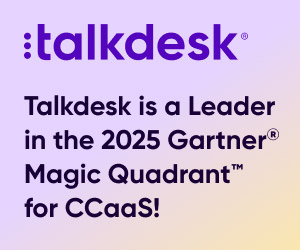There are few things that frustrate customers more than being stuck on hold without reaching an agent – with many eventually losing their patience and ending the call.
It’s no surprise, therefore, that over 70% of contact centres consider Abandon Rate to be one of their most important contact centre metrics – keeping a close eye on the figures that have the potential to seriously hurt your customer experience.
So, how do you keep your abandon rates low? We asked the experts to find out…
1. Be More Strategic! Set Data-Driven SLAs to Avoid the ‘True Danger Zone’

You need a deeper understanding of your customers’ behaviour!
After all, a Call Centre Helper survey revealed that abandonment spikes vary based on industry and behaviour, as 19% of respondents cited the spike at 30–59 seconds, and 15% said they saw it after 240 seconds (4+ minutes). In between, many customers were willing to wait, suggesting a tolerance for longer hold times.
By analysing your queue data, you can identify what these thresholds are for your centre and implement more responsive routing strategies. For example, instead of relying on the classic 80/20 model, consider data-driven SLAs such as 90% in 90 seconds.
This strategic shift allows you to avoid the ‘true danger zone’ of abandonment, reducing unnecessary pressure on your staff while aligning service levels more effectively with real customer tolerance.
Contributed by: Zainab Ahmed, Marketing Manager, Peopleware
You can also watch the video below to hear Dean Couchman, Consulting Lead for the UK at Peopleware, explain how to improve abandon rate and why you should align service level with customer expectations:
2. Reserve the Phone Lines for Complex Issues (by Providing Alternative Channels)
Wait times in contact centres can surge due to various systemic, operational, or external factors such as service outages, billing issues, product recalls, or even natural disasters.
Implementing an effective omnichannel strategy is essential to mitigate these spikes. By providing alternative channels like WhatsApp, webchat, or bots for routine enquiries, you can distribute customer interactions more efficiently, reserving phone lines for complex issues.
Contributed by: Lisa Orford, Contact Centre VP, 8×8
3. Make Sure Your FAQs Are Up to Date and Easy to Find

Give customers the power to help themselves!
Direct callers to self-service tools like FAQs, knowledge bases, or chatbots for simple issues.
Keep these resources easy to find, up to date, and simple to use. When customers can solve issues on their own, it frees up agent availability and improves abandon rates.
Contributed by: Jonathan “Kenu” Escobedo, Customer Success Manager, Miarec
4. Offer Agents Overtime to Help Reduce Queues

Offering extra overtime and providing quick support to colleagues can help reduce queues.
Of course, this is a short-term solution, but it can be helpful, nonetheless.
5. Take a Closer Look at What’s Happening With Schedule Adherence
If schedule adherence is low, consider strategies to improve it – while ensuring changes do not negatively impact employee wellbeing.
For example, cancelling essential team meetings and coaching sessions to handle high abandon rates might seem beneficial in the moment, but it can ultimately harm employee performance, making the problem worse.
Contributed by: Philip Stubbs, Partner at Atlantic Insight
6. Stop Relying on Assumptions and Limited Surveys

Reducing abandon rate starts with understanding why customers leave before they reach an agent, and that means listening more closely.
Those that do it well use technology to analyse every interaction, including dropped calls, to uncover the real reasons behind abandonment.
Whether it’s long hold times, confusing menus, or too many transfers, organizations can uncover both the patterns and the emotional triggers driving customers to hang up.
Instead of relying on assumptions or limited surveys, teams can understand exactly where journeys break down and act quickly to fix them.
Contributed by: Frank Sherlock, VP of International, CallMiner
7. Offer Callback Options to Reduce the Likelihood of Drop-Offs
With the industry average call abandonment rate hovering around 4.4% in 2024, according to our UK Contact Centre KPI Benchmarking Insights Report, even slight improvements in agent availability can translate into significantly enhanced customer satisfaction.
Consider offering a callback option – this simple feature allows customers to request a return call rather than remaining on hold, reducing frustration and potential drop-offs.
Contributed by: Ben Booth, CEO, MaxContact
8. Introduce Virtual Agents to Free Up More of Your Live Agents’ Time

Improving abandon rates typically means reducing wait time, but hiring more agents or lowering call volume is often not realistic. Adding virtual agents (VAs) now allows you to do both!
The combination of natural language processing (NLP), large language models (LLMs), and artificial intelligence (AI) enables modern contact centre solutions to offer VAs that can work alongside live agents.
A simple written set of instructions and access to a knowledge base can put a VA to work immediately.
Use skills-based routing to route specific calls to appropriately trained virtual agents, or use a VA as a front-end answering service that can also intelligently transfer calls to live agent queues or other virtual agent queues.
Lastly, don’t trade one kind of abandon for another! Use your integrated QA tool to measure VA performance as you do human agents; then update their instructions to improve the quality of their interactions.
Contributed by: Jeff Lear, Sr. Solutions Engineer, Enghouse
9. Enable Smooth Handovers Between Channels When Necessary
Reducing the abandonment rate starts with recognizing that customers often drop off when their chosen channel can’t deliver a full resolution to their issue, such as when a customer enters via a channel and they end up in a “cul-de-sac”.
To tackle this, contact centres should focus on creating intelligent journeys that escalate to more complex support when needed, eliminating dead ends and enabling smooth handovers between channels without forcing the customer to restart their interaction.
Contributed by: Martin Taylor, Co-Founder and Deputy CEO, Content Guru
10. Regularly Review Your IVR Options to Make It Easier for Callers to Find Solutions

A user-friendly IVR system is key to reducing abandonment by efficiently routing customers to the correct agent. Therefore, regular reviews and updates of your IVR can streamline navigation, making it easier for callers to find solutions.
Complement this approach by bolstering self-service options, such as online knowledge bases and intelligent chatbots. By empowering customers to resolve issues on their own, you decrease the need for immediate human intervention, which in turn lowers wait times and call abandonment.
Contributed by: Ben Booth, CEO, MaxContact
11. Better Manage Your Customers’ Expectations With Estimated Wait Times and Virtual Hold Options
No one likes being placed on hold, especially when they have no idea how long it will take.
Therefore, providing estimated wait times helps set expectations and builds trust.
Better yet, offer a virtual hold option to allow customers to save their place in line and receive a callback when it’s their turn.
Contributed by: Jonathan “Kenu” Escobedo, Customer Success Manager, Miarec
12. Automate Routine Tasks to Give Agents More Time to Handle Calls

High wait times drive up abandonment rates, but AI can directly reduce them by increasing agent efficiency. By automating tasks like post-call summaries, agents can reclaim up to 1.5 minutes per interaction.
At scale, this boosts agent capacity by 25–30%, depending on average talk time. Add AI-powered customer insights like sentiment analysis and interaction history and agents can start conversations with full context, shortening talk time even further.
The result: faster resolutions, more handled interactions, and reduced queue times.
Contributed by: Lisa Orford, Contact Centre VP, 8×8
13. Predict When Increased Call Volumes Are Most Likely to Occur
Abandon rates often seem unexpected and unexplained – but they don’t need to be. After all, if you can predict call volumes and staff accordingly, you will improve your abandon rates!
With a workforce management (WFM) solution that is properly integrated into your contact centre, CX leaders can predict when increased call volumes are likely to occur, or how many agents you’ll need to meet an unexpected spike in call volume.
Not only can you predict what your call volume might look like on a given day, but you can also plan which agents you will need, when you will need them, and how to efficiently fill work schedules.
Contributed by: Jeff Lear, Sr. Solutions Engineer, Enghouse
14. Understand Customer Intent to Drive Up Positive Abandonment

The use of technologies like natural language processing (NLP) can enable real-time analysis to determine intent and redirect customers to more efficient solutions.
For example, if a customer calls about a query better handled via self-service, like filling out a form, they can be sent a direct and unique link via SMS while still on the line.
If they follow the link and subsequently decide to hang up their call, that’s a form of positive abandonment: the issue is resolved faster, freeing up resources and improving satisfaction.
Contributed by: Martin Taylor, Co-Founder and Deputy CEO, Content Guru
15. Ask Yourself “Is Understaffing the Root Cause of the Problem?”
If abandonment is consistently high, it can also help to determine whether your capacity planning model and WFM suggest that understaffing is an issue – once actual volume, process timings, and absence data are factored in.
If the model does not indicate understaffing, review its assumptions and validate them to ensure accuracy for future periods.
If your models correctly identify the scale and timing of understaffing, use them to guide your next steps. In the long term, increasing advisor numbers or adjusting scheduling rules may be necessary.
Contributed by: Philip Stubbs, Partner at Atlantic Insight
What Have You Tried to Reduce Your Abandon Rate?
Join our LinkedIn community and let us know.
For more great insights and advice from our panel of experts, read these articles next:
- Top Tips for Digital Channels – Forecasting and Scheduling
- Top Tactics to Improve First Contact Resolution (FCR)
- Are Chatbots the Tech We All Love to Hate?
- 10 Game-Changing Ways Emotion Will Shape the Future of CX
Author: Megan Jones
Reviewed by: Xander Freeman
Published On: 17th Jun 2025 - Last modified: 27th Aug 2025
Read more about - Technology, 8x8, Abandoned Calls, Ben Booth, Call Handling, CallMiner, Content Guru, Customer Experience (CX), Customer Service, Dean Couchman, Enghouse Interactive, Frank Sherlock, Jeff Lear, Jonathan Kenu Escobedo, Lisa Orford, Martin Taylor, MaxContact, MiaRec, Peopleware, Philip Stubbs, Top Story, Zainab Ahmed





















